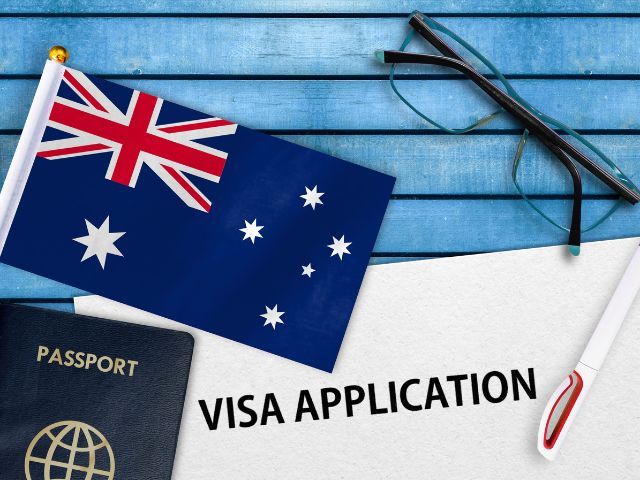
Since I announced my intention to migrate to Australia and started working on my visa/PR last year, I've received numerous inquiries from my readers about the migration process. Today’s post is dedicated to all the patient readers who have been waiting for this information.
I initially planned to write this article after successfully moving to Australia. However, considering the lengthy waiting times - it's been almost two years and I'm still waiting - I decided to share my experiences now. Another reason for the delay was not having a clear answer to the common question, "Why Australia?"
I figured it might be better to release this article now, even though I'm still in the midst of the process. I’ll update it as I go and share the backstory in a separate article later. Today's article will focus on two things: the WHATs and the HOWs. I won't be discussing the WHYs and the WHENs, as these are still unclear at this juncture.
Considering the complexity of Australia's visa landscape, I can only discuss the visa categories I researched when planning my move, so this information will be most relevant to skilled professionals in Malaysia. Just to call it out - as I'm not a registered migration agent or lawyer (note: they're both very different roles), I won't be able to share personalized advice with you but I hope that, at least, the experiences and circumstances of mine would help you to better figure out what next to do.
At least that's what I found very useful (more on the resource groups later) throughout my journey by reading others' experiences sharing and connecting a dots or two. Enjoy the read!
Migrating to Australia may seem complex, but it is not too hard to navigate it by yourself if you understand the concept. Australia's government did a good job of providing comprehensive steps and clear documentation, guidelines, and steps to follow throughout the process which was helpful for me.
Unfortunately, this was also daunting to many given the many pages to consume & read - and after all, we humans have a very short attention span nowadays (only 8.25s, worse than a goldfish!). This was often cited as the main reason to go for a Registered Migration Agent/Lawyer which will often cost aplenty. I'll briefly cover this topic later as well.
Here's a quick overview of some of the key steps for migrating to Australia.
Like most of the developed countries, Australia adopts a similar approach when it comes to bringing in skilled talents into the country through a points-based system. Points are awarded based on key factors like age, education, work experience, and English proficiency. Hitting the minimum points threshold is your ticket to participate in the migration selection process.
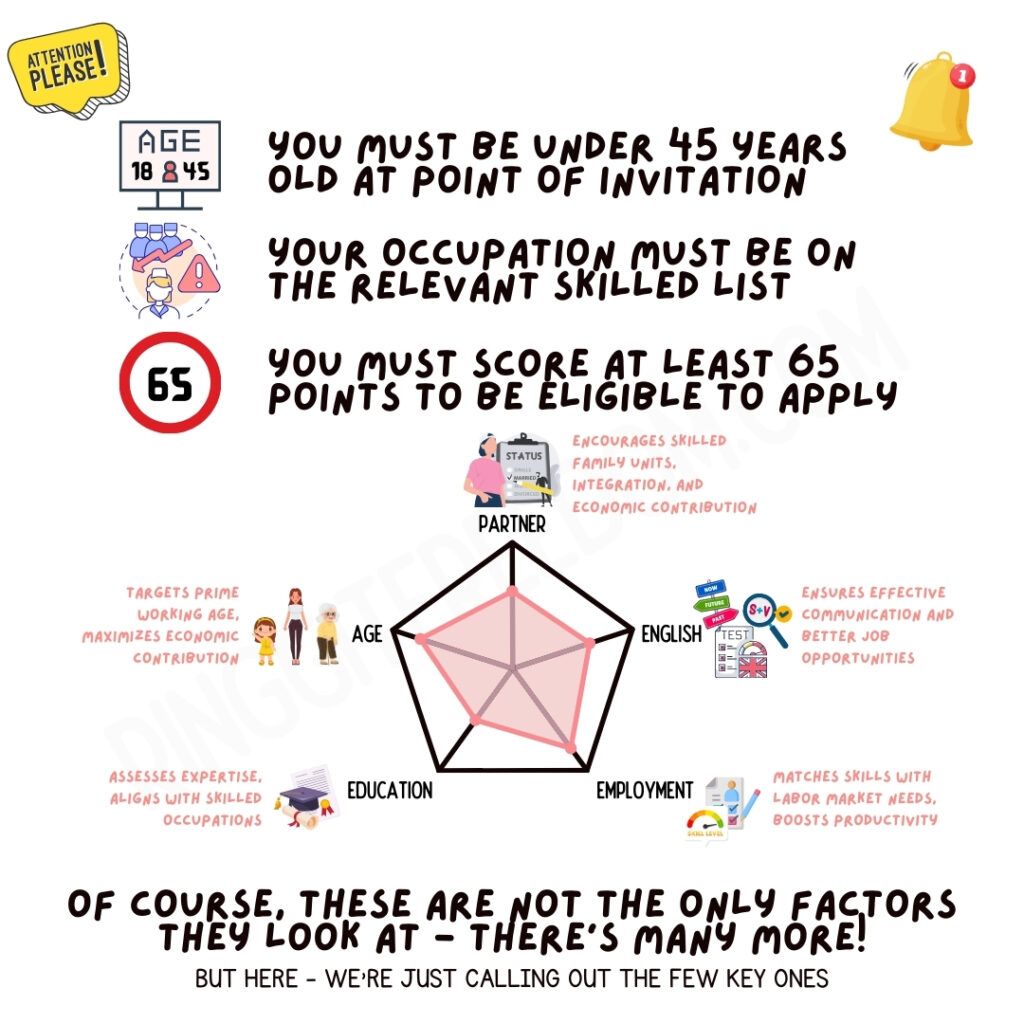
Whilst there have been discussions about Australia revising its points-based system to align more closely with other Five-Eyes Nations, as outlined in the Migration Strategy 2023 Whitepaper, it remains a points-based system. This ensures that the candidates they select align closely with Australia’s needs.
Your skills and qualifications need to be validated by Australian authorities. The Skilled Occupation List (SOL) plays a crucial role, listing all the professions that are in demand. This list helps determine which visa category you might be eligible for.
Generally speaking, Healthcare professionals or Teachers are always in demand and will almost always get priority processing (in a matter of weeks) vs. other occupation classes (at least 12-18 months for in-demand occupations, or 2-4 years for low-priority occupations).
Thankfully for me, ICT professionals are still kind of in demand, not in the priority processing queue but at least still on their list with tolerable allocations with approx 12-18 months waiting time. Some roles with abundant of supply (i.e. accountant) might be on a tougher side, considering the very limited grants that they have per year.
There are several visa types that people generally consider when planning their migration to Australia which can generally be fitted into three major buckets: Skilled-Independent Stream, State-Sponsored Stream, or Employer-Sponsored Stream.
This category includes visas like the Skilled Independent Visa (subclass 189) which do not require employer sponsorship. Applicants must meet specific criteria based on their skills and qualifications, with a minimum of 65 points score.
This is for those who like to do things their way with zero strings attached. If you get an invitation for 189, you're damn lucky (except if you're from Healthcare or Teaching) considering the shortage of invites in the last two years due to the significant build-up backlogs from the previous government.
Hence you can imagine the competition around this space - not many will get even an invitation even if they meet the "minimum 65 points". Just to give you some perspective, even if ICT roles have a higher chance to get invited than, say, Accounts, they may only get invited when they have at least 100 points, way above the minimum threshold. You can find the numbers published by the government here.
It's a dog-eat-dog world...
This category includes visas like the Skilled Nominated Visa (subclass 190) or Skilled Work Regional (Provisional) Visa (subclass 491) and later transitioning into Permanent Residence (Skilled Regional) visa (subclass 191) where a specific Australian state or territory nominates the applicant based on the labour needs of that region. The applicant must meet the criteria set by both the state and the federal government.
Unlike the Skilled-Independent stream, this visa does come with a few strings attached such as requirements to live & work in the region/state if approved. Still, it's a very strong and viable alternative for those finding the competition for 189 too fierce.
With state sponsorship, your chances of getting an invitation can significantly increase, especially if you're struggling to hit the high points required for the 189. While you do need to commit to living and working in the sponsoring state for a couple of years, it’s a small price to pay for a better shot at making Australia your new home.
Additionally, the state governments may also have their own lists of in-demand occupations and criteria for nomination, which can sometimes be more favourable than the federal requirements. Plus, the added benefit of state support can ease your transition into the Australian workforce.
It's about playing the long game and being strategic - sometimes having a few strings attached is worth it to secure your place in Australia.
This stream includes visas like the Employer Nomination Scheme (subclass 186) and the Temporary Skill Shortage Visa (subclass 482), which require an Australian employer to sponsor the applicant. The employer must meet certain conditions, and the applicant must fulfill the job requirements set by the employer and the Australian government. UPDATE: On December 7 2024, the Skills in Demand (SID) visa replaced the Temporary Skills Shortage (TSS) visa but concept shall largely remaain the same. For specifics please refer to official Australian Immigration website.
Finding an employer willing to sponsor an offshore candidate with no Australian experience can be challenging, but if you manage to secure a sponsor, this pathway is one of the fastest and most certain routes to move and work in Australia.
The key advantage here is the direct link to employment, which can significantly smooth your transition into the Australian workforce. Once sponsored, you can work towards permanent residency within 2-3 years through the subclass 186 visa. This pathway provides a clear, structured route to not just living in Australia, but fully integrating into the professional landscape.
Employers sponsoring you must also meet specific conditions and must demonstrate that they can't fill the position with a local candidate (Australian Citizens or Australian PR holders). While it might sound like a lot of red tape, for many professionals, this stream offers a faster, more assured way to start a new chapter Down Under as this is something that we can keep trying until we find the willing employers (vs. waiting forever for Federal or State Government's invitation which may never come).
Generally speaking, Skilled Independent Visa (subclass 189) would be rated as the "best possible visa" to get as it provides you with a one-step permanent residency with no restrictions, followed by Skilled Nominated Visa (subclass 190) which is very similar but with certain state obligations (staying/working in that state).
Following that, you can't go wrong with either Skilled Work Regional (Provisional) Visa (subclass 491) or Temporary Skill Shortage Visa (subclass 482) temporary work visa as both provide you with a guaranteed pathway towards Permanent Residency in 2 or 3 years via through their respective Permanent Residency Visa counterparts: Permanent Residence (Skilled Regional) visa (subclass 191) / Employer Nomination Scheme (subclass 186)
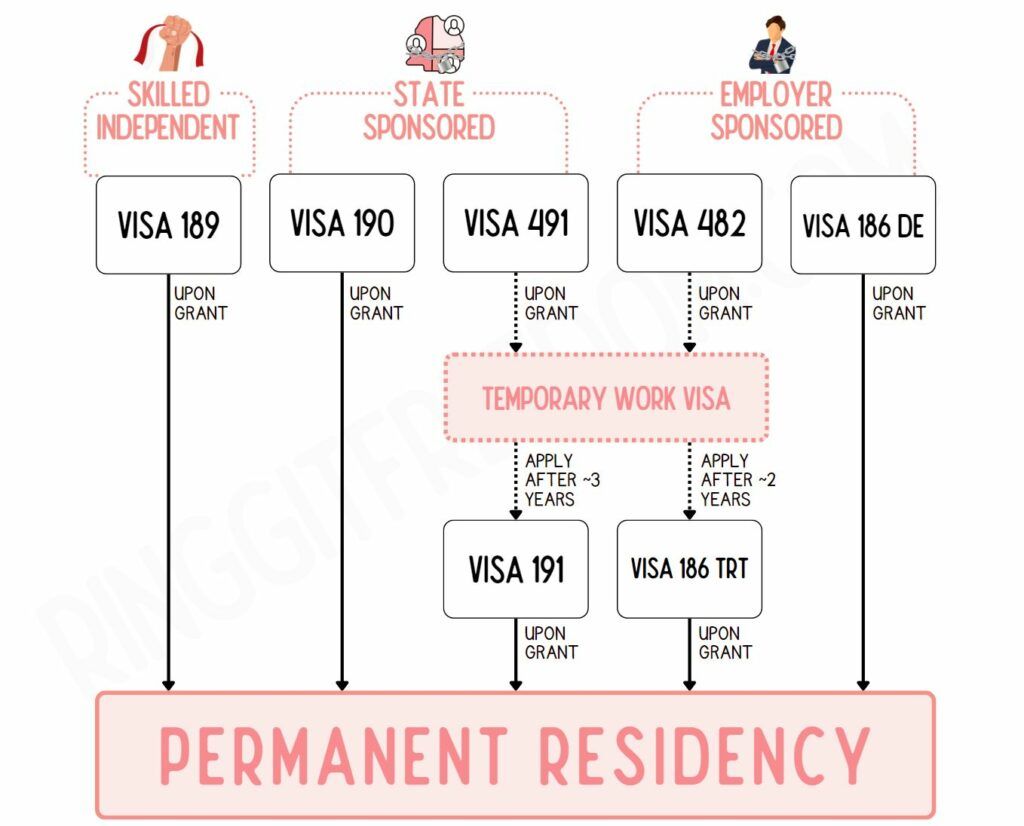
Due to the extreme competitiveness and the huge number of people trying to migrate into Australia the last decade, it's always better not to self-impose limits on the categories that you'll be attempting for and keep your options open.
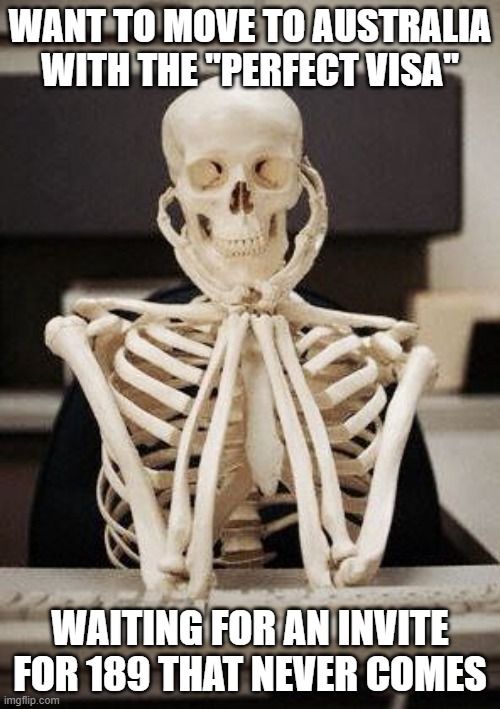
Remember this, securing an invite is a step closer to achieving your migration dream (vs. just waiting forever for an invite). Do whatever you can to maximize your score, especially those within your control such as maximizing your years of experience in relevant industries, scoring flat 8's on your IELTS exam, staying single OR married with a skilled partner (just kidding!), etc.
I'll cover this more in-depth in the next section, but generally speaking, you'll usually need to prepare some of the pre-requisite tests/documentations/papers so that you qualify to express your interest to the Australian Government (Federal or State, or sometimes both) that, yes, you have the intention to move there.
If you get selected, you’ll then be invited to apply for a visa. This involves submitting a detailed application along with necessary documents to prove your claims, undergoing health and character assessments, etc. Unfortunately, this is also the part that many may give up - as the wait for an invitation could be as short as a day, or as long as a couple of years, or it may never come.
One part that confused the heck out of me was how their permanent residency system worked, and often many people think that the permanent residency lasts only 5 years, and every 5 years you'll have to "renew your PR" as you do your passport.
It doesn't work like that - at least in Australia's case, your permanent residency is... permanently yours once granted to you. Upon the first grant, you'll usually be asked to make your first trip Down Under within the first 12 months to "activate" your permanent residency, following which you'll have total of 5-years "travel visa" activated starting from the day of the first grant (not your first trip!).
After the lapse of the five years, few things can happen:-
Think of the Resident Return Visa as your "Passport" to enter Australian Borders as a Permanent Resident. You don't need a "Passport" if you don't plan to travel overseas, and you'll need to make sure you have it ready should you choose to travel out of Australia. That's how my lawyer explained it to me and immediately the concept was clear.
To put it simply, you don't want to catch yourself in a situation where you are outside Australia but without a valid "travel facility" to return home to Australia.
And now the last part, before we delve into the specifics. If it is not made clear to you yet, fortunately, or unfortunately, in Australia's case, it is not mandatory to use a registered migration agent or lawyer to represent you. Many have gone with the do-it-yourself (DIY) route (myself included) to save money as generally speaking it'll cost double if you opt for an agent/lawyer to represent you.
However, if you've already started feeling dizzy reading the high levels above, don't worry, it's not you. It's just the complex migration landscape that Australia’s Department of Home Affairs had set themselves onto. This is also the reason many shunned away from the DIY route.
It's entirely possible to DIY yourself - you just need to read aplenty - which fortunately their website offers a wealth of resources to help you navigate this journey. But if you decide to go with an agent/lawyer, please MAKE SURE that they are registered migration agents/lawyers and ask for their MARN ID, which you can look up on Australia's government website here.
One key difference to call out between a migration agent vs a migration lawyer - an agent merely helps you with specific advice / administrative activities to facilitate your migration process, but a lawyer would be able to do all that plus advise you from legal perspectives, represent you in court, etc. Of course, a lawyer would generally cost more and hence many opted for agents to represent them - but you also have to pick the right agent.
As I opted for the DIY route, I won't be able to comment much on ways of working with migration agents/lawyers - but as with many of the posts I've seen on Facebook / Reddit Support Group, even if you delegate, you must still do your research and cannot fully delegate. It's not like you throw money and the problem is not yours anymore, at least not the case for immigration and visas.
Remember this, if your agent fucks up, it is you and your record that will get into trouble with the government. I've seen people getting permanently blacklisted from Australia (and the Five Eyes countries) because of careless mistakes from their agents representing them, ultimately costing them their migration dream FOREVER in this lifetime not only for Australia but also for the other Five Eyes countries (US, UK, NZ, Canada).
If you're DIY-ing, it's good to join support groups like Australian Visa & Immigration Discussion Group on Facebook or /r/AusVisa on Reddit to read about others' experiences but like everything else that you read on the Internet, please always bring your salt filter (take it with a grain of salt, ha-ha!) and do your homework from official government website!
Now, let's move on to the sharing of my personal experiences when applying for the Australian PR visa, with some other tips.
When I first started the whole process, I told myself that this would be a long marathon and not a short sprint, and I'm so thankful that I did that.
As of writing this article, I'm coming close to the two-year mark of the process and I'm still barely done yet with the whole visa journey and am still waiting for my visa grants.
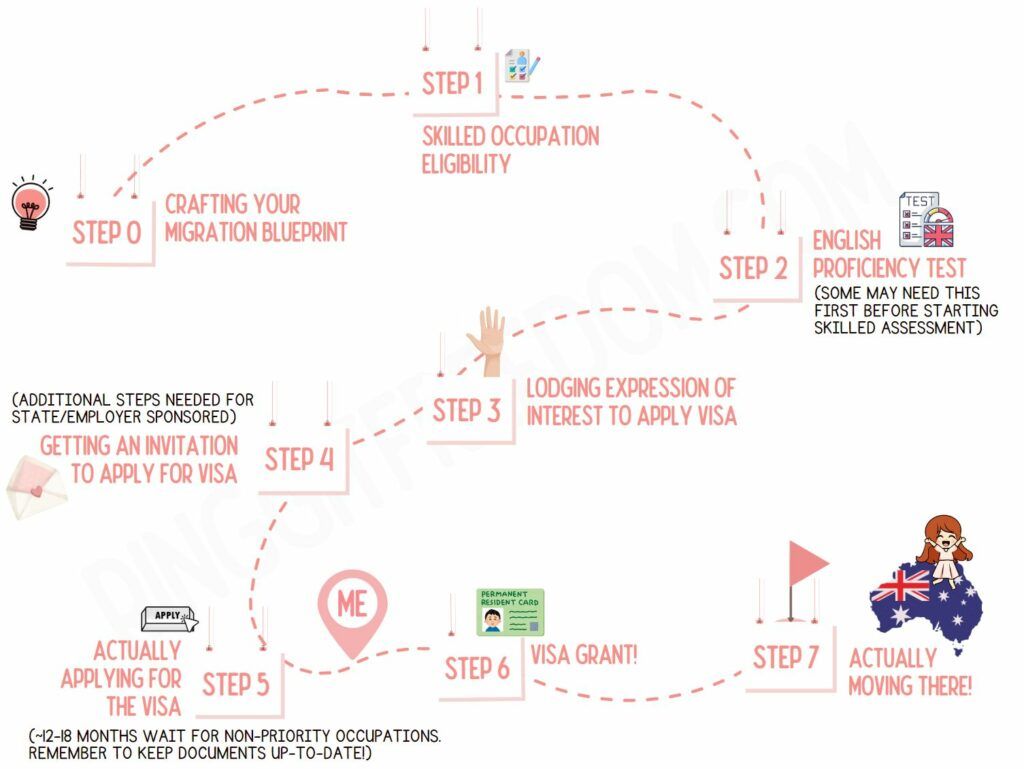
Of course, all I need to do now is just be patient and hopefully someday in the near future I can update this article and officially close this chapter off but till then.
There are few things that are important before you start. You'll need to first the layout the groundwork and create a solid strategy for your migration journey. In my line of work, we usually call this the Project Initiation and Planning phase.
Things to consider are such as my personal circumstances:
The first step usually involves determining your current points using the Department of Home Affairs' Points Calculator then coming out with a strategy on how to maximize your points.
After that, I'll need to decide if I want to do everything myself or engage an agent or a lawyer to do everything for me. I initially opted to do everything myself so that meant countless hours of reading historical posts on Facebook Groups or Reddits, filtering information and trying to scour experience sharing from real agents/lawyers, or individuals detailing their experiences as those had proven to be very useful.
One particular post that I still remember is this post from an ex-Immigration Officer on Reddit which was very useful insight and helped me to shape my strategy.
Additionally, whilst I still prefer the DIY route, given some complexities on my end (which I can't share publicly yet but don't worry, it doesn't apply to most people I know today), I also decided to seek some professional advice through consultations with migration lawyer ensuring that everything that I put in plan is in order and nothing is left out.
On the travel history part, yes, you did not read it wrongly. I purposely put it here as I only found out later during the application step itself that I had to compile the list of travel history - as mine was pretty intensive the last 10 years, I had to backtrack from multiple sources: Old Passport Stamps, Flight Tickets, Email Trails, Expense Claim History, Google Map Location History, etc. YOU NEED THE EXACT DATES OF TRAVEL FOR EACH AND EVERY TRIP YOU HAD DONE THE LAST 10 YEARS! But don't worry, you'll have months to prepare it now that I've told you upfront. Don't be like me scrambling to dig out my travel history during the visa application (step 5) itself.
Once all that is done, it's time to jump into the Project Execution & Controlling phase.
Cost & Time: MYR ~1.1k / ~1 month
Now that the high-level plans are set, I'll need to check and make sure that I'm eligible to move and finalize some of the preparation activities that need to be done.
Some questions I've asked myself are:
As I'm qualified as an ICT professional, things were easier for me since there's only one approved body to assess my skills the Australian Computer Society (ACS). You can look for your skilled occupation list here which also tells you who are your possible choices for assessing the body who will be assessing your employment experiences to prove that you're indeed a skilled professional.
I crawled through the 21-page (then) guideline for applicants from ACS on what the requirements to get assessed as a skilled ICT professional, including how they calculate my experience years.
In the case of ACS, they will only start counting my experience years AFTER my graduation, and the first two working years experience will also be deducted for "training" purposes. In simple words, only working experiences 2 years after my graduation will be considered as "skilled experience" to qualify as a skilled ICT professional.
Once that's done, it's getting my documentation sorted in order to prepare for the ACS Skilled Migration Assessment. I won't be listing out their requirements here, as requirement changes over time but generally speaking, these were the documents that I had to prepare, colour scan, and compile into corresponding PDFs (one file per category).
Just for the record, the total pages totalled about 98 pages. That's how extensive they want to go to when it comes to checking your documentation. Again, check the latest guidelines - things may be added or removed on a month-to-month basis depending on the assessors.
In my case, I didn't translate anything but for EPF specifically I requested a formal written letter in English from them confirming my accounts' existence and also my employer's name for last 10 years, but due to their policy they can only retrieve records up to the last 6 years (which was good enough for me). I also decided to get two of the skilled occupations assessed which doubled the cost but proven to be unnecessary in the end as I was lucky to get an invite very quickly.
Cost & Time: MYR ~3.3k / ~4 months
Since my skilled assessor (ACS) does not require English Proficiency Evidence as part of the requirements, I could do this step in parallel whilst waiting for the skilled assessment results (which took me 4 months of waiting). For some professionals (i.e. Engineers I believe?), English Proficiency Evidence were requested as part of the documentation to be submitted so they had to first finish up the English test.
There's nothing much to say here, some people are naturally good in English (I had an acquaintance scoring flat 9's on all 4 categories in IELTS with only 2 weeks prep), and some are not. Unfortunately, I belong to the latter category and had to spent about 1.5 months preparing my English.
There are two types of major tests that people usually choose from - either IELTS English Test by British Council/IDP/Cambridge English or PTE English Exam by Pearson are fine as both are recognized by the Australian Government. Some swear by IELTS (myself) and others PTE - depending on where your strengths are, you may prefer the IELTS exam formats or PTE exam formats. Additionally, I also went for IELTS Academic in case if I ended up pursing further studies, but some people preferred the IELTS General which has easier Writing Tasks so if that works out for you, it's also fine!
Whatever you choose, do not underestimate and get very familiar and comfortable with their (odd) test formats. You cannot (usually) just go in and wing it due to the expectations on the exam formats. I opted for IELTS test as I wasn't made aware of PTE back then, but had I been given the choice again, I'll probably still stick with IELTS. I prefer their exam format which are more clear-cut and split but their markings are very strict, especially speaking and writing.
Some very useful prep materials & sites that I had used, listed in no logical order:
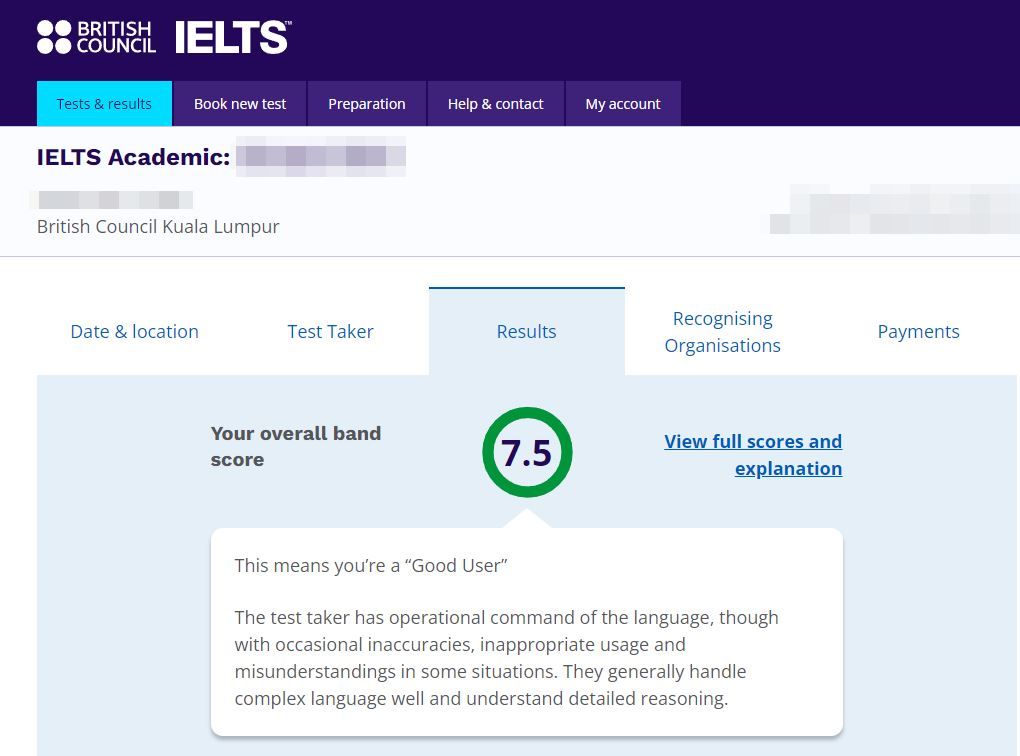
As mentioned above, I went with the British Council when I sat for my IELTS exam. There were some unfortunate incidents (technical issues on their end) resulting in my first exam results being null & void, and having to re-sit for the whole thing again (traumatic I must say), but at least they acknowledged the problem on their end and agreed to addressed the whole issue amicably so I'll give them credits for that.
Cost & Time: MYR ~1k / 2 months
After at least 3-4 months of waiting, finally, all the prerequisites are in order. Armed with my IELTS results and skills assessment letter, I was able to finally lodge an Expression of Interest (EOI) through the SkillSelect system in August/September. Note that you CANNOT submit an EOI without first having a valid English Test Results and Skilled Assessment Letter as a Malaysian.
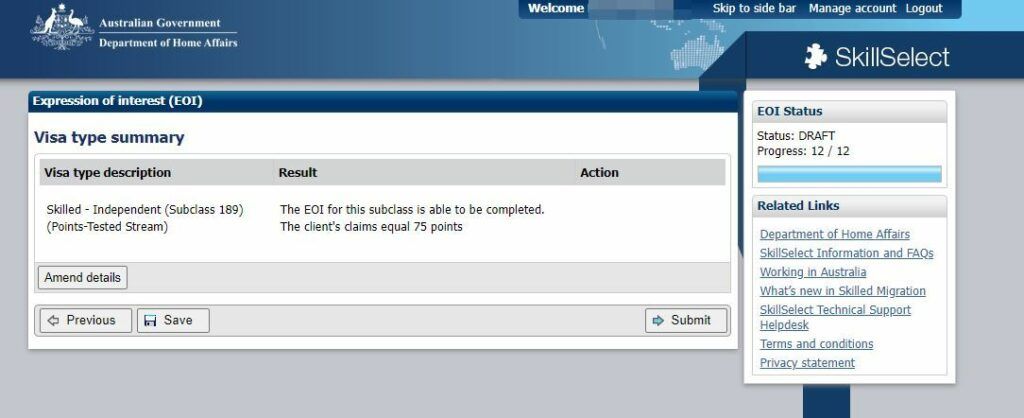
As part of the EOI lodgement, I was required to self-declare some of the details of my work experience, education, and other personal info to show I was a good fit for the country and at this point, I do not (yet) need to submit any documentation (which I already had prepped in earlier steps anyway)
Just one tip that I have learned from various Facebook Groups & Reddit Posts - check your state requirements. Some state will NEVER pick your EOI, if you indicated interest in multiple states & federal invite as they think that you may not commit to their state. To avoid such problem, many of us submit multiple EOI's, one for each state (if we qualify).
Since the submission is free and this is merely an expression of interest which does not guarantee an invite, in my case, I submitted at least 4 separate EOI's to maximize my chance of securing an invite, aligning to my Migration Strategy. Each of them would have a unique EOI ID generated:
I did not lodge any EOI with some states (i.e. Queensland, Northern Territory, Western Australia, or South Australia) either due to their very specific requirements in Fiscal Year 2023-2024 requiring candidates already onshore or having already secured employment in their state; or due to the lack of prospects in the region for ICT professional (I don't see myself living there). You can also see that I am being slightly picky and excluded the 491 Visa as I much prefer to live & work in the City rather than in Regional Areas.
Again, how many EOIs you submit will largely depend on your profile, your strategy, and the temperature surrounding Australian migration policies at the time of application. In my time, it was a very tight competition due to the government reducing the migration target by 50%-80% so I decided to spread my bet beyond the Golden 189 Visa.
Once you have submitted, you'll get a confirmation email from SkillSelect and all you do is sit back, relax, and make sure your documents don't expire while waiting (and proactively renew them if you have to). The wait can be brutal if you're unlucky, I've seen cases where people waited for 2-3 years for an invitation to apply. In my case, I was f**king lucky to get an invite within 4 months. Make sure to again re-check the requirements from the state, some will also require you to lodge a similar Registration of Interest on the State Government's website (such as the case for Victoria).
Cost & Time: FREE / ~5 months
Not everyone will go through this phase, as it depends again on the requirements laid out by the state which may differ from one to another. In my case, the state was interested in my EOI and wanted to do some fact-checking before sending me the official invite to apply for the visa (through the Federal Government a.k.a Department of Home Affairs).
In short, they are checking and "trying" before they "buy". I had to go through another round of state nomination review & approval process and their ask is very simple - prove whatever I have claimed in my EOI to them.
In some states (which happens for mine too), they will also ask you to prove that you can meet their additional requirements laid out earlier - which was why I mentioned the importance of checking the states' specific requirements before even lodging the EOI and getting ready those documents.
I submitted all the documents which I had already prepared previously during the Skilled Assessment step to the state, plus some additional niche ones which were part of their specific ask such as proof of offshore residency, employment contract, past 6 months bank/credit card account statements with everyday spending. Some states will also charge you for this service as it costs them people and time to verify your documents submitted.
Had I submitted EOI for the other states (such as Western Australia or South Australia), I'll probably get rejected at this step since I don't meet their specific requirements (being onshore or having employment secured in their state)
I was expecting a long wait as the state government mentioned that it may take up to 6 weeks. But to my surprise, the whole state nomination approval took me only less than a week. Within a week, they approved my nomination, congratulated me, and sent me the official invitation to apply for a visa through the Department of Home Affairs. Note that at this point, it does not yet indicate any form of approval for the visa - I merely got the "ticket" to lodge my official visa application and pray/wait for the grant.
Whilst waiting for the state approval, I also kickstarted some official documents' translation process in parallel. Whilst the translated documents were not needed for all the steps prior this, however, I knew that for the official visa application, I'll need to at least have my Birth Certificate translated. As a precaution, I also translated my SPM Certificate and School Leavers' Certificate in case I need it in the future for other purposes.
For translation within Australia, you MUST use services recognized by the Australian Government which is NAATI certified or if done outside Australia, must be recognized body so I went with ITBM which is one of the recommended bodies by the Australian Consular in Malaysia, costing me MYR ~100 per page and ready within a week. Still cheaper than engaging Australia-based NAATI-certified translators.
Cost & Time: MYR ~1.3k / less than 1 week
With the official invitation at hand, I can now finally lodge my visa application with the Department of Home Affairs. Basically, once the state government finalizes their decision to invite you (for 190's or 491's) or if the federal government decides to invite you (for 189's), you'll receive a system notification email from SkillSelect notifying you that you have been invited and requesting you to proceed with the final application, furnishing all details, provide the necessary evidence, and complete the payment.
Documentations-wise, it is submitting again the same/similar set of documents that I had done in the last two rounds, with a few additions this time around such as a Translated Birth Certificate, a Recent Passport-Format photo of myself, and a Police Check (in Malaysia we call it Sijil Kelakuan Baik or Certificate of Good Conduct issued by Wisma Putra).
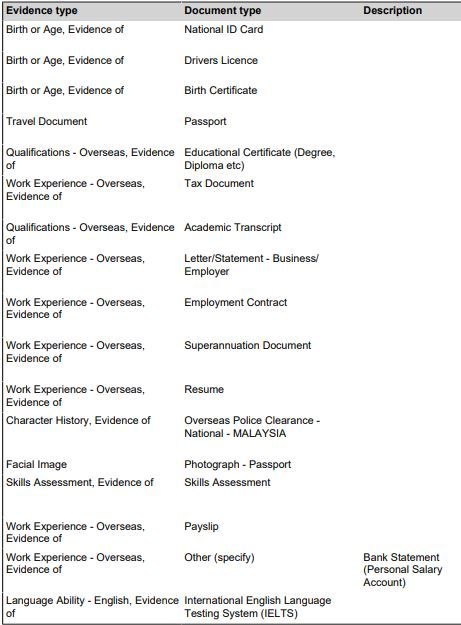
If you don't have a Police Check done yet, don't worry, just proceed with the application for now and do it (fast) whilst waiting - the Immi Officer won't open your file so soon anyway. As of writing, it takes at least 6 - 18 months for an officer to be assigned to your case after application unless you're from a priority occupation (healthcare or teacher).
For payment, most of us from offshore would most likely be paying it using our Credit Card - just remember that there'll be additional card surcharges imposed by the Australian government, not to forget also your bank's charges such as unfavourable exchange rate or additional conversion fees on top, usually ranging to a total of 1.5% - 2.5%.
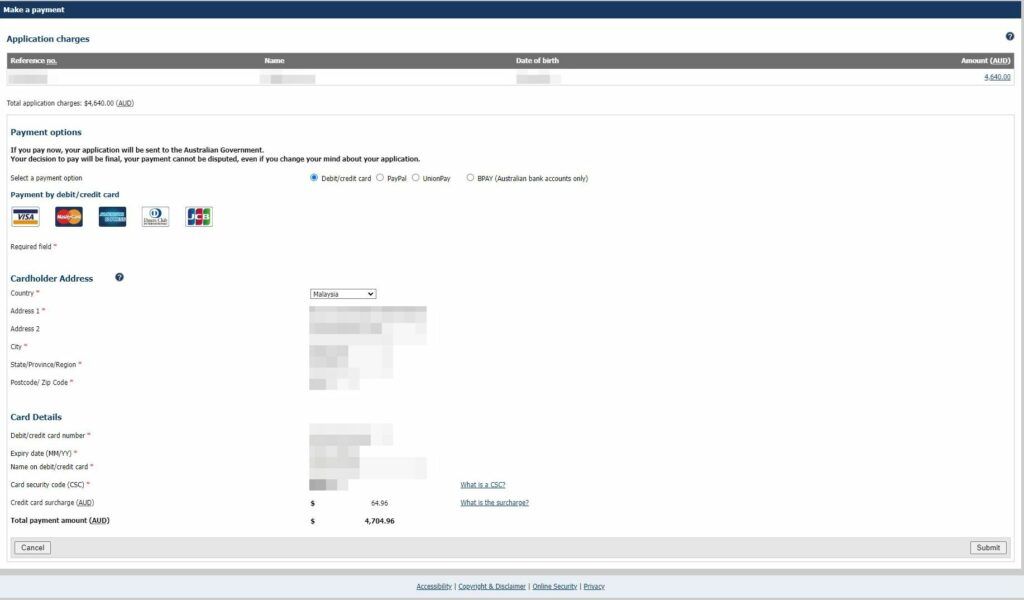
Upon completing the payment, your visa application will officially be submitted and you can track your progress via ImmiAccount.
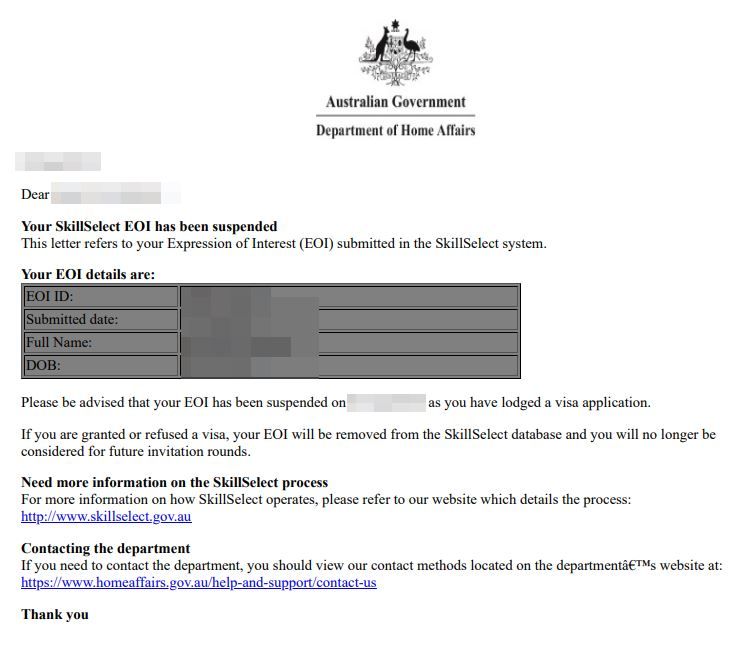
At the same time, you'll also receive an message from SkillSelect that your EOI has been suspended. Don't worry about SkillSelect going forward, as you don't need it anymore.
One thing to note tho - if you had submitted multiple EOIs in the past as I did, remember to also log in into the OTHER EOI ID's in SkillSelect to withdraw or suspend them, as there's no point at this juncture for you to receive further invites from any other States/Federal Government. This is both to provide opportunity to others whom may need it, and also not to receive invitation for visa of lower tiers (for example if you submitted EOIs for both 190 and 491, no point getting 491 invite going forward).
Another tip I can give you - you DON'T NEED to start and finalize your application form all in one go. You can always save the draft and revisit it - so make sure that you prepare and check 999 times but submit it only once! It's always to play it safe rather than finding out later that you've forgotten something, attached the wrong file, or filled up the form wrongly.
Cost & Time: MYR ~15k / less than 1 week
Once you have submitted your application, you may also notice that there's a section requesting your action: Health Examination Needed. You cannot simply use any other annual screening reports that you have done as those are useless to the eyes of Australian Government (I found out the hard way and paid for unnecessary fees to do additional screening last year).
Simply put, the Health Examination can only be done after you lodge your visa application, which you'll see in the Action Required section. Follow through the steps (I don't have the print screens anymore, unfortunately) and make your Health Declarations, which will generate a HAP ID for you. This is extremely important as it will be required for the medical centre to share information with the Australian Government.
With the HAP ID, you can now proceed with the appointment with selected medical centres by region which you can find more information on their website. For Kuala Lumpur, LifeCare Diagnostic Centre at Bangsar South was appointed so I pre-paid MYR 365 for their online packages by selecting the appropriate package according to my visa type (in my case, it was PERMANENT VISA - ABOVE 15 YEARS OLD - NON-HEALTHCARE PROFESSIONS), went to the centre, and done within a couple of hours.

The results will be updated back to your ImmiAccount within 1-2 weeks after the test, so don't worry even if the status still shows "Pending". Eventually, it will go away and show Health Clearance provided (if there's no issues).
As for Police Check (Sijil Kelakuan Baik or Certificate of Good Conduct), just visit our Wisma Putra website on https://ekonsular.kln.gov.my/login and then follow through the steps there to apply for a certificate. The waiting time varies - I've done it twice so far and both were approved / ready for collection within a month.
Essentially, you fill-up the form and provide them with the reasons for your application, they'll process it and either request you to furnish more evidences on why you need it or approve it straightaway. To save time, make sure you explain very clearly that you're requesting this as part of Visa Application for Australian PR/Visa and attach the Application evidences to them.
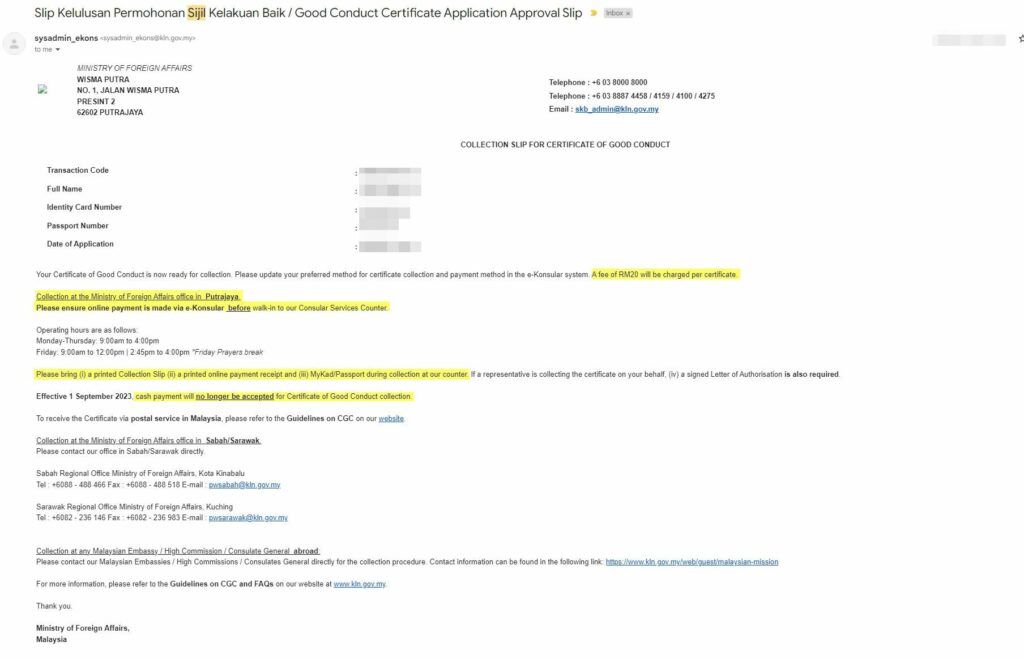
Once they've approved it, you may or may not receive an email from e-Konsular stating that your certificate is ready for collection hence it is important to frequently login into eKonsular to check latest status. You'll have to make the payment (MYR 20 only) online before you can collect.
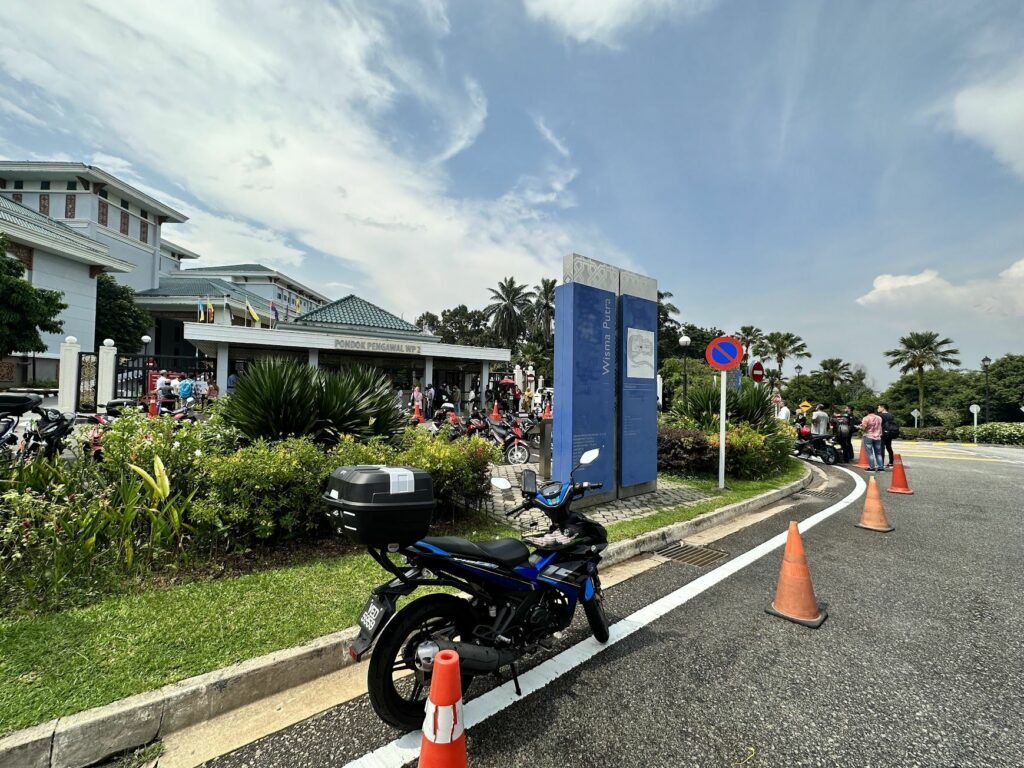
Visit Wisma Putra @ Putrajaya and go straight to the SKB Collection Counter, get a Number, wait, and you're pretty much done.
Remember to print both the Collection Slip and Payment Receipt if you're doing physical collection - you'll need to bring physical printed copies for both of it during the collection day.
UPDATE MARCH 2025: They have recently introduced Digital Version of collection method - exact same step as above but choose "Digital Download" instead of "Collect @ Putrajaya". I did it for my 3rd renewal in 2025 considering the soonish-to-expire certificate and was pleasantly surprised that I can now download directly from eKonsular rather than driving all the way down south.
Whilst waiting - it is important for you to keep track in case any of your important document expires. In my case, my passport expired shortly after the submission so I had to renew it and inform immigration through ImmiAccount and since the Police Certificates in Malaysia are tied to my passport, I had to revisit Wisma Putra to have a new Police Check issued too.
For those that like to go above and beyond, some people (myself included) also attach in advance the Form 80 and Form 1221 as there was some sharing in the past where some (not all) of the applicants received a S56 (Request for More Information) from the officer to fill up either one or both of those forms, resulting in additional 2-4 months waiting time after the receipt of S56. So to avoid that, many of us submit these forms pre-emptively even though it is not mandated as part of the requirement.
You may also want to consider informing your employer (if you're on good terms) that you're currently undergoing such a process, as they may or may not receive calls/emails from the Australian Immigration Officer requesting verification of your employment.
It is also extremely important at this stage that you start keeping track of your Years of Experience (after deducting the years that your assessor deducts) and be very careful in your career going forward until you get your visa grant.
I almost accepted a lateral transfer/move outside of my nominated occupation and had I done that, my years of experience would have stopped accumulating from that point onwards and for every month that Australian Government drags their feet on my application, I will start losing "years of experiences" since they only look back the last 10 years' worth of experience, with the first 2 years deducted for "training purposes" at the time of processing the visa. This is extremely sensitive for me considering that my years of experience barely made it into the >8 years mark and I can't afford to lose any months working in non-related professions due to the slow processing by the Australian Government.
Other than that, life goes on. It's also important for you to consider your circumstances - more specifically, your marital status as this will have a huge implication on the application if it changes during the waiting game. For example, as a single application with no intention to bring a partner, I was allocated 10 points in the Skill-Tested stream but if these circumstances change and say, I am married (or has a partner, de-facto or not) where my partner is not skilled/qualified, I will get fewer points than that which is a common cause for visa rejection.
This is the part that gets extremely tricky especially with the long visa processing times, as immigration expects us to put our life on hold until they've vetted through the visa application.
Cost & Time: MYR ~0.6k so far / Timing Unknown for now, with lots of Patience Needed.
So that's pretty much it! As of writing this article, I'm still awaiting the visa grant so I'll do further updates once I've unlocked the next steps. All things considered, I have spent at least MYR ~21K to date on the whole visa application process inclusive of all the random miscellaneous charges. Had I not opted for the DIY route, the figures could easily be 50% to 100% higher than what I am paying.
Considering the ever-changing landscape of Australia's Migration landscape, the article can be considered as outdated before it was even published as the migration landscape is ever-changing. I'm merely sharing my personal experiences which are accurate at the time when I went through these processes. You need to consult directly the Immigration Home Affairs' official page for the latest news & requirements to check what is needed.
If you are not confident in doing it yourself (it's easy in my opinion, you need to just invest some time to read aplenty), perhaps it's better for you then to consider professional services offered by Registered Migration Agents or Lawyers, which will easily x1.5 ~ x2.0 your upfront visa costs due to the service fees charged by them.
Still, even if you engage a professional, it doesn't save you from having to do your own research. You'll still need to check their work to ensure that everything is in order. Damage is on you, not them, if things screw up, and it'll affect your immigration records history PERMANENTLY not only for Australia, but also the other Five Eyes country (Canada, New Zealand, US, and UK). People have been innocently barred for life due to their agent/lawyer's mistake, a mistake which affects their potential pathways in the lifetime.

Nevertheless, I hope this article was helpful enough to get you started and pursue your Australian dreams and hopefully, we'll all get our dreamed permanent residency or work visa sooner than later!
As always, thanks for reading and I will see you again in my next post! If you haven't already, be sure to follow me on my Instagram, Facebook and YouTube for the latest updates!
Cheers,
Gracie
Disclaimer: The information provided in this article is for general informational purposes only and does not constitute migration advice. For advice tailored to your specific circumstances, consider consulting a registered migration agent or migration lawyer. To find a registered migration agent, visit the Office of the Migration Agents Registration Authority (MARA) at https://www.mara.gov.au/.